By Mike Hedge
Every summer, deep in the Nevada desert, a temporary city is created by tens of thousands of people. This week-long celebration is known as Burning Man. Radical participation, gifting, self-reliance, and self-expression, are a few of the core principles.
After many years of post production, we have finally finished our huge participatory documentary, As The Dust Settles, which was shot out at Burning Man during the summer of 2008.
Our documentary was an ambitious and experimental project between several collaborating filmmakers. As far as I know, no other documentary has ever been made quite like it, following the unique perspectives of multiple collaborating directors. Our documentary was participatory, everyone was invited to be involved, and nobody really knew entirely where this journey was going to take them.

The idea for the documentary began back in 2006 and 2007 when I saw hundreds of beautiful and inspiring photos from Burning Man posted to Flickr. I remember being awe-struck by the color and the art. I thought it would be amazing if I could shoot a documentary there, using a new 4K resolution camera that was soon to be released, called the RED One. I had also recently been part of a photography project called A Million Little Pictures, where hundreds of people were given disposable cameras. Our photos then got displayed together at a group art show. After reaching out to some friends on Tribe.com about the project, several people suggested the idea of having a bunch of people each document their Burning Man experience.
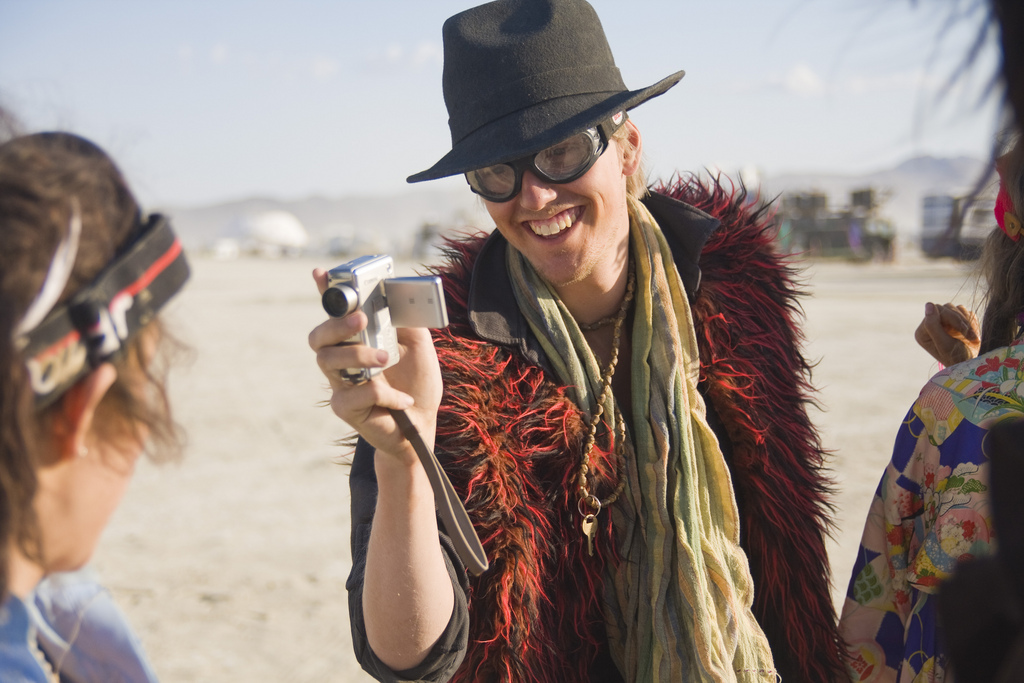
Eventually, all of those ideas merged into the idea of having several collaborating filmmakers all combine their experiences into one multi-perspective documentary. I reached out to directors I knew, and they reached out to their friends. It was like a giant snowball; more and more people were added to the project, until ultimately we had about 25 people participate.
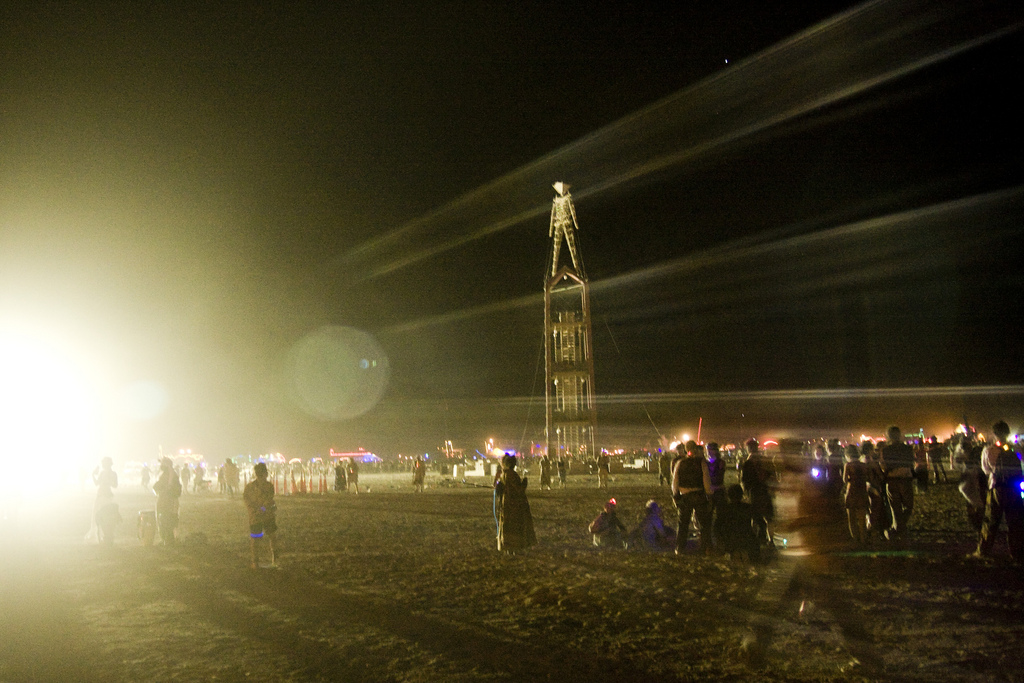
Our project proposal to Burning Man was approved, and we were one of a few documentary projects allowed to shoot in 2008. We bought and rented a ton of gear for the project, including three RED Digital Cinema cameras and several small HD pocket cameras. Most of the people working on the documentary had never been to Burning Man, so we prepared the best we could.

We had a special rule with our project. We agreed to spend only 50% of our time working on the project, this allowed for the rest of our time to be spent fully immersing ourselves in the Burning Man experience. Several of the originally planned shoots did not come together as planned, as on the playa things can change with little warning. The environment at Burning Man is both breathtakingly beautiful and, at times, as harsh as you can imagine. You can be trapped in dust storms for hours.
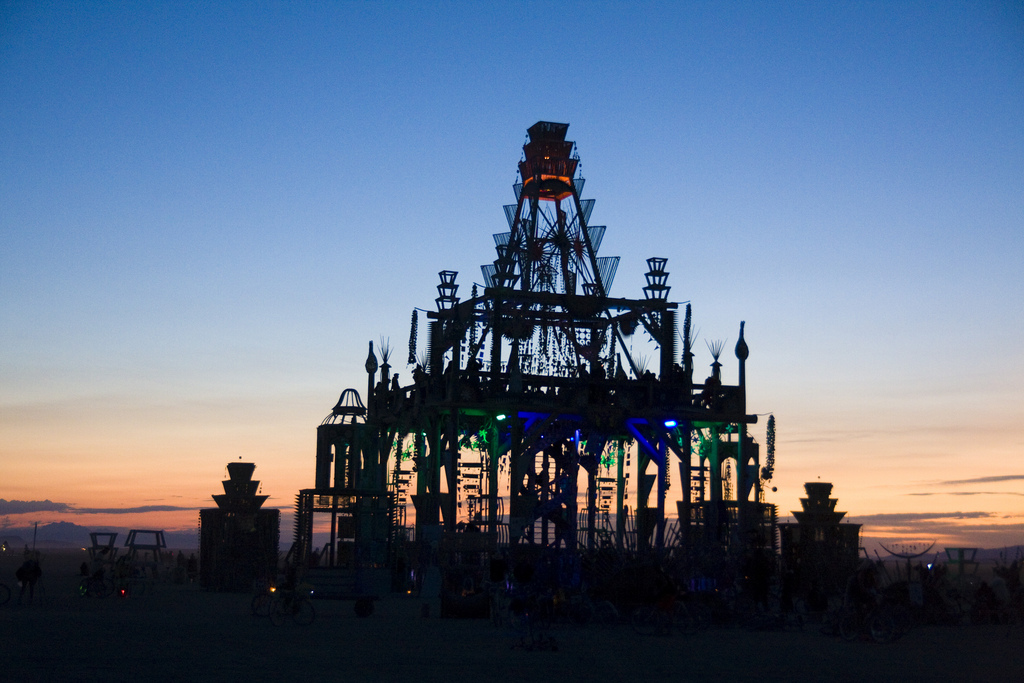
We ended up capturing about 440 hours of footage, from about 17 different cameras, shooting 10 different formats. We had footage from the RED 4K cameras, several pocket cameras shooting HD, and even a Flip camera. Post production began immediately. We processed all of the 4K and HD footage down to tiny 240p files, so that we could collaboratively edit the documentary from several different cities. We hired an editor to begin the editing process, but that didn’t work out too well, so we each tried going through our own footage to edit something together. I think people involved with the project became busy with their own lives after the shoot. So in May 2011, after years of struggle with the edit, I started editing full time in an effort to actually get the film finished, due to a promise I had originally made that I would complete the film. It was an unbelievable effort, but I was eventually able to combine the various perspectives from five of the collaborating directors. In September 2012, we finally had the final cut done and sent off to over a dozen film festivals. Sadly, I then had to re-edit the entire film, but that’s a whole other story. We had our world premiere in March 2013 at the Byron Bay International Film Festival in Australia.
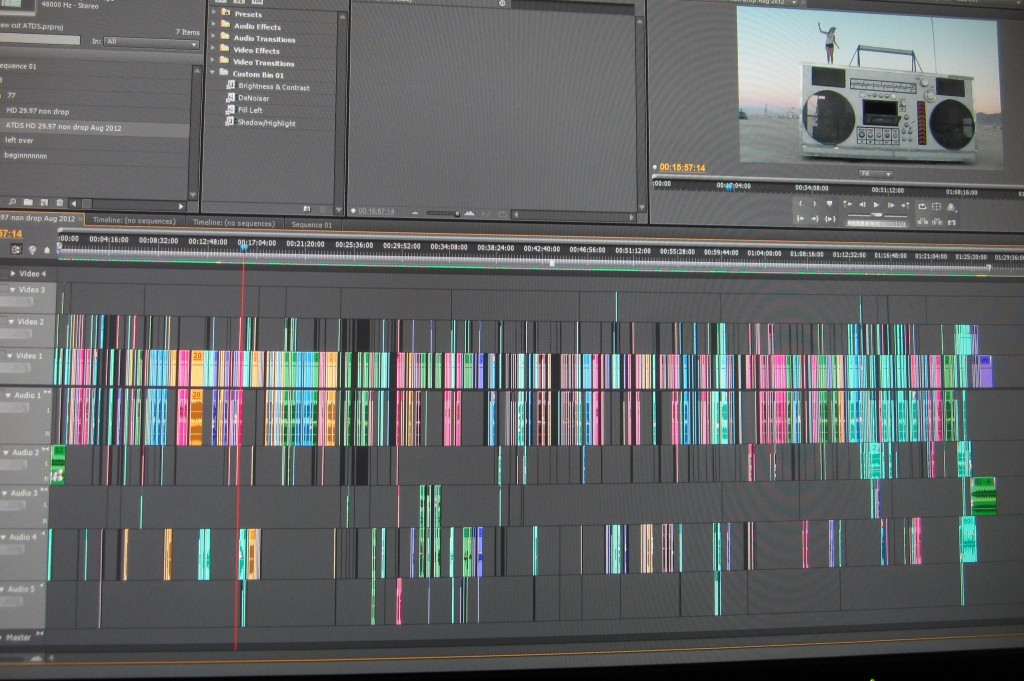
Here are seven lessons I have learned along the long, wildly exciting, and completely exhausting journey to get our documentary finished:
Multiple Cameras and Timestamps-
Since our documentary follows the exact time sequence of how things actually occurred during the seven days of Burning Man, it was vital to be able to sort all the media by the exact hour or minute it was captured. Due to several of the cameras having incorrect timestamps, organizing the footage became a tedious and frustrating process of manual sorting. Even though I had made sure that each of the cameras we used in the project were all synced to the same timecode, I neglected to double check. I then failed to fix the incorrect timecode metadata on the files before we processed all of the footage and renamed all the media. Since we had already distributed the hard drives with the wrongly-named media to several collaborators, I had to keep working with the incorrect timestamps. Ultimately, I had to visually organize all of the media files by day, and then edit each day until I had an assembly edit that combined all of the different perspectives from the 17 different cameras. Not an easy lesson to learn.
Watermark Your Footage-
We had an unfortunate situation during post production, where one of the people we had hired to do some editing, ended up taking media from the editing hard drives, and posting it online without permission. It was a very stressful experience, as I had not watermarked any of the footage. Lesson learned. If you are going to pass along your footage to someone else to edit, please be careful with who you trust, make sure that you watermark your footage, and of course make sure that you have at least two sets of master backups of all the footage in separate locations.
Split The Expenses-
Since the funding for the project came primarily from one source, it was often difficult to get any involvement from some of the collaborators involved in the project. Had we all split the expenses, I think it would have been a more pleasant experience, as each of the collaborators would have had some stake in the project, and thus an incentive to see it get finished successfully.
Health, Food, and Exercise-
If you are going to choose to edit the film yourself, make sure you decide on a healthy schedule. One where you are taking enough time to exercise and eat well. The idea of the project being so important that 15-18 hours a day need to be spent on getting it finished can sound smart, but in the long run the loss of health and sleep are not worth it. I wish I had paid more attention to my health, and to exercising and eating properly.
Don’t Promise to Finish Your Project-
Originally, as part of the approval process, I had made a personal promise that I would finish the project. Giving my word was something I thought I could commit to, because I had assumed everything would go as planned and that the project wouldn’t be too difficult to complete. But things changed over the years, and due to various unfortunate situations regarding the media or the people participating, the project gradually came to a complete stop. Knowing that I had given my word and that I had been trusted to complete the project, I kept going. It was all very overwhelming, and at times it felt as if every day somebody was dumping different boxes of puzzle pieces onto the already staggering state of problems. I had nightmares about needing to finish the project. So, if I were to do it all over again, I wouldn’t make a personal promise to finish a project, especially not a participatory project with dozens of participants. It’s stressful enough just trying to get a film finished, so I wouldn’t burden myself by pretending to be my own completion bond company again.
Finish Your Film Fast-
Some other project with the same subject or topic as yours, just might appear out of nowhere and finish theirs before you. This is what happened to our project. Another documentary shot at Burning Man, shot three years after we did, managed to finish their project before us. We were in no position to compete with the other project, and although it was a completely different type of documentary, we missed out on many opportunities for our documentary.
Don’t Set Expectations Too High-
One of the toughest experiences I had to go through, was all the rejection. Rejection from over a dozen film festivals, including some I was even an alumni of. The selection committees pick films for their reasons, and each year is different. Our film might have gotten into several of the festivals, had we finished the film several years earlier. I was pretty shocked that our film didn’t get selected for documentary festivals such as True False, Full Frame, or Big Sky. I truly thought that our documentary, which has no added music, no set-up interviews, and no voice-overs or narration, would be just the type of documentary that documentary film festivals would be looking for; something unique, something not like other documentaries. Because I had my expectations set so high, I ended up being incredibly let down. Lesson learned. I managed to move on, grateful that we were able to have a world premiere in Australia at the 2013 Byron Bay International Film Festival.
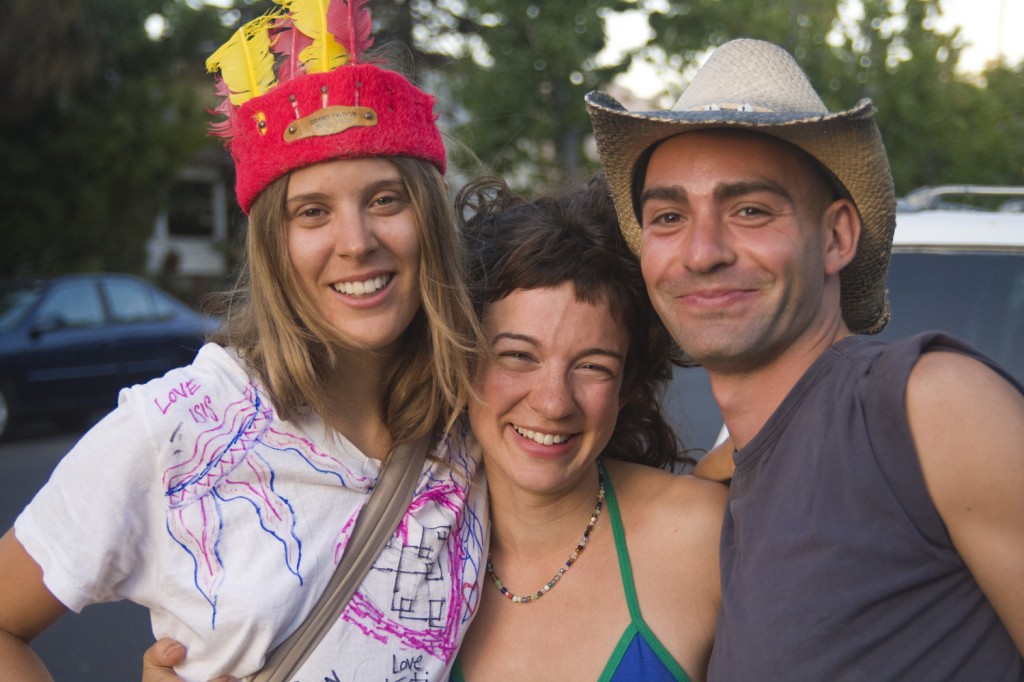
After our two sold-out screenings at our world premiere, I focused on finishing the DVD and getting the film exported for the various online platforms like Amazon and Hulu using Kinonation. Our film is finally out this week on online platforms like: Amazon Instant, Seed&Spark, Hulu, Vimeo VOD, VHX, Indieflix, Reelhouse, Distrify, Indie Reign, as well as direct from us using Gumroad. The film is also available on DVD and USB Drive.
It takes unbelievable willpower to not give up; a perfect balance of persistence and patience. Every time I get caught up in the seriousness of getting a film launched to the world, I remind myself that there are thousands of other people also trying to get their films out, who are also vying for the audience’s attention. It sure is a fascinating time we live in, so I remind myself to relax and enjoy the process.
Mike Hedge – producer
http://www.asthedust.com
The collaborating directors: Roger Ingraham, Katheryn McGaffigan, Jamie Dee, Jeremy Lubman, and Tarynn Wiehahn






